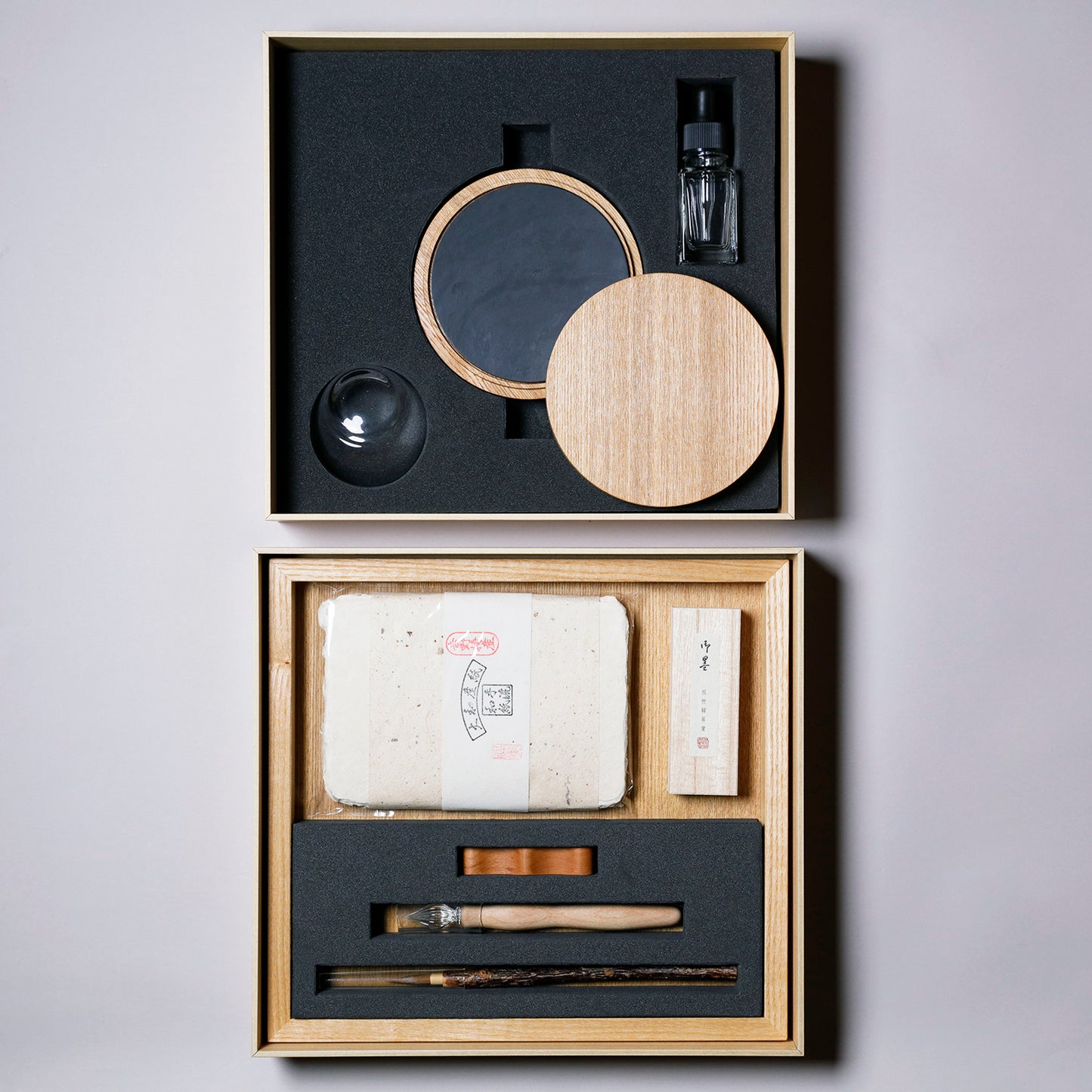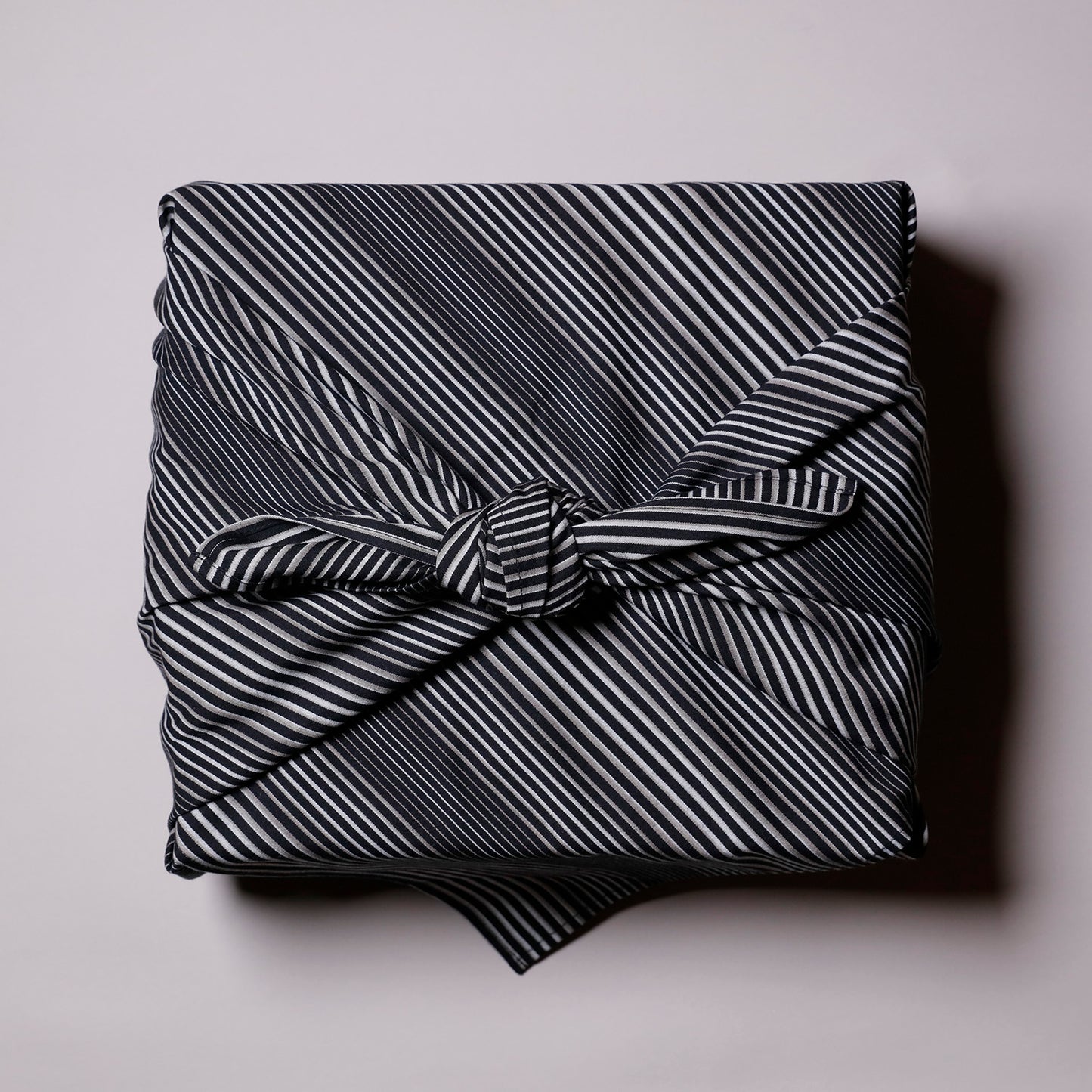BUNBOU-GOHOU (Five Treasures of the Study)
Brand:
呉竹|KURETAKE
| amount/size | price | |
|---|---|---|
| BUNBOU-GOHOU (Five Treasures of the Study) | JPY 275,000 tax in |
quantity
|
Couldn't load pickup availability
Free shipping to Japan for orders of JPY 20,000 excluding tax or more.





Description
BUNBOU-GOHOU (Five Treasures of the Study) has been created by Kuretake, a company that wishes to pass on and preserve the traditional techniques of Sumi-ink-making cultivated in Nara prefecture and to spread the excellence of Japanese craftsmanship throughout the world.
In ancient China, a scholar's room was called a Bunbou (a study), and the four most important tools used by the scholar, which were the brush, inkstick, inkstone, and paper, were called the Bunbou-Shihou (Four Treasures of the Study).
This time, a glass pen born in Japan was added to the treasures to make five sets of "BUNBOU-GOHOU (Five Treasures of the Study)."
The five items are made of top-quality materials and skillfully crafted with elegant designs suitable for modern lifestyles.
The sound and feel of rubbing the inkstick, the texture of the paper, and the touch of the writing with the brush.
The pleasure of handwriting would make your daily life more enjoyable.
Set Contents
① Brush (Aichi / Toyohashi): w10 x h185 x d10 mm (excluding protective cap)
② Inkstick (Nara): w20 x h9 x d75 mm (not including the paulownia box)
③ Inkstone (Tokyo, Miyagi): w120 x h30 x d120 mm / inkstone surface: w101 x h5 x d101 mm
④ Paper (Nara): w110 x d155 mm ( 1 sheet size )
⑤ Glass Pen (Fukui, Nara): w15 x h145 x d15 mm ( not including protective cap)
Pen Rest (Tokyo, Nara): w70 x h17 x d15 mm
⑥Wooden Tray (Tokyo, Nara): w267×h35×d245 mm
⑦ Glass Inkstick Rest: w60×h53×d58 mm
⑧ Glass Water Dropper: w29 x h94 x d29 mm
⑨ Furoshiki Wrapping Cloth (Fukuoka / Kokura): w90 x h90 mm
⑩ Leaflet: w105 x h148 mm
⑪ Stackable Wooden Box : w280 x h110 x d258 mm
・All of these products(1~6) were handmade by artisans and use natural materials.
As a result, there are individual differences in the color and shape of each product.
・Some of the contents may be subject to change without notice.
Toyohashi Brush Traditional craftsman : Yoshimitsu Sugiura
Toyohashi writing brushes have good ink absorption and retention, with a characteristic smooth writing feel.
The rare and precious hair for the brush is from the tail of an ‘itachi’, (weasel / ermine), and is carefully finished by craftsmen.
This hair keeps its shape well and has good pliability, making it suitable for both kana and kanji.
Ink Stick Engraver : Genshin Yonetani
The rare and precious hair for the brush is from the tail of an ‘itachi’, (weasel / ermine), and is carefully finished by craftsmen.
This hair keeps its shape well and has good pliability, making it suitable for both kana and kanji.
Ink Stick Engraver : Genshin Yonetani
Solid Ink Stick (Sumi) making begins with a wooden mold.
The wooden molds are the soul of all types of solid ink, from those for practical use to the intricate designs of those for ornamental use.
The ink ingredients of soot, glue and fragrance are kneaded, formed into balls and pressed into pear wood molds, chosen for the wood’s hardness and rigidity, which does not swell and deform when it absorbs the moisture from the ink balls.
Enjoy the detailed designs and elegant brown-tinted ink of Sho-toku, an ancient ink that has been in use for over 30 years.
Inkstone Maker : Takashi Aoyagi
The wooden molds are the soul of all types of solid ink, from those for practical use to the intricate designs of those for ornamental use.
The ink ingredients of soot, glue and fragrance are kneaded, formed into balls and pressed into pear wood molds, chosen for the wood’s hardness and rigidity, which does not swell and deform when it absorbs the moisture from the ink balls.
Enjoy the detailed designs and elegant brown-tinted ink of Sho-toku, an ancient ink that has been in use for over 30 years.
Inkstone Maker : Takashi Aoyagi
In the history of making inkstones, the circular shape is one of the oldest and ergonomically superior designs, and we aimed for functionality while creating a modern styling.
Unlike regular inkstones, the sumido (polishing area) is in the center and has a gentle slope where the ink gathers so that it can be
Unlike regular inkstones, the sumido (polishing area) is in the center and has a gentle slope where the ink gathers so that it can be
easily sucked up with a glass pen.
The inkstone material used is Gensho stone from Miyagi Prefecture.
The inkstone material used is Gensho stone from Miyagi Prefecture.
Thin but durable, Gensho is one of Japan's representative inkstone materials, with excellent functionality.
Washi Paper Traditional Craftsman : Masayuki Fukunishi
Fukunishi Washi Honpo has continued to uphold the tradition of Yoshino handmade washi.
The Fukunishi family has been in this traditional craft industry for six generations, since the Edo Period, and even now each sheet is dried in the sun.
Washi paper is produced using a unique manufacturing method in which mulberry pulp is mixed with white clay.
It is strong, flexible, and has excellent preservability.
Glass studio Kasho : Yoshitaka Tajima
WOODWORK : Masaya Fujimoto
It is strong, flexible, and has excellent preservability.
Glass studio Kasho : Yoshitaka Tajima
The glass pen is a writing instrument that originated in Japan and was invented in 1902 by a wind chime maker in Edo.
A transparent and beautiful glass pen made by careful handwork by craftsmen.
The tip is polished into a hemispherical shape, giving you a smooth writing experience.
The shaft is made from natural cherry blossoms from Mt. Yoshino , which is registered as a World Heritage Site, and the gentle texture and warmth of natural wood further enhances the hard beauty of glass.
A transparent and beautiful glass pen made by careful handwork by craftsmen.
The tip is polished into a hemispherical shape, giving you a smooth writing experience.
The shaft is made from natural cherry blossoms from Mt. Yoshino , which is registered as a World Heritage Site, and the gentle texture and warmth of natural wood further enhances the hard beauty of glass.
WOODWORK : Masaya Fujimoto
The circular case was designed to gently hold and protect this inkstone.
This simple design, considers proportional balance and practicality to store the inkstone while making the inkstone easy to use.
In addition, the tray holding this writing set has has grooves on the side, which not only improve the design, but also provide a good grip for fingers when lifting.
The material is ash wood, which has a smooth grain, and is finished
In addition, the tray holding this writing set has has grooves on the side, which not only improve the design, but also provide a good grip for fingers when lifting.
The material is ash wood, which has a smooth grain, and is finished
with an oil coating so that you can enjoy the texture of solid wood.





